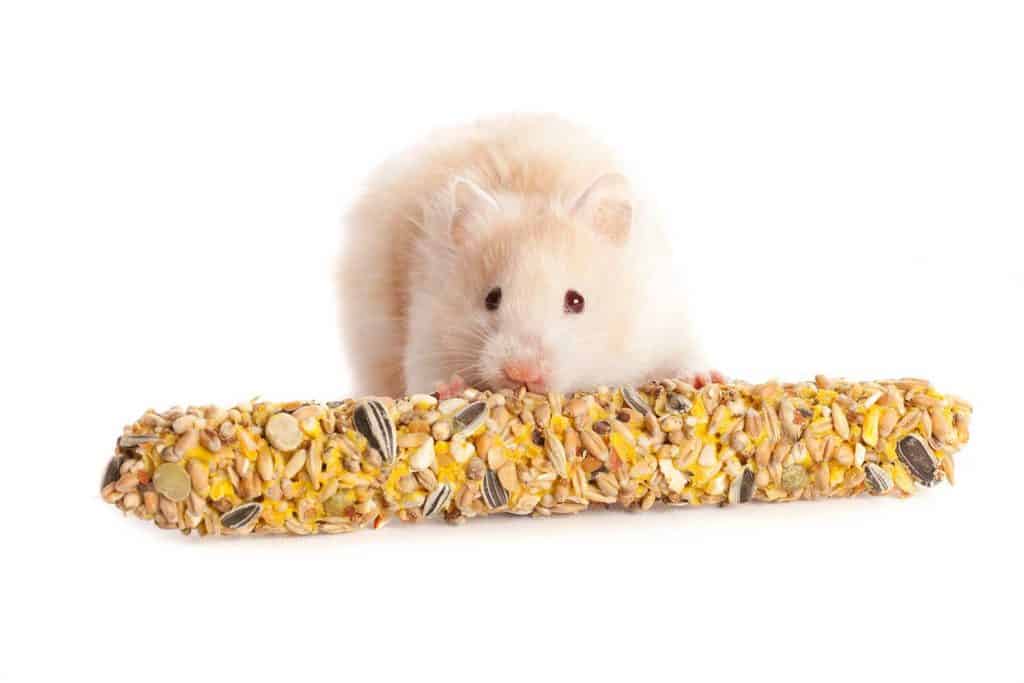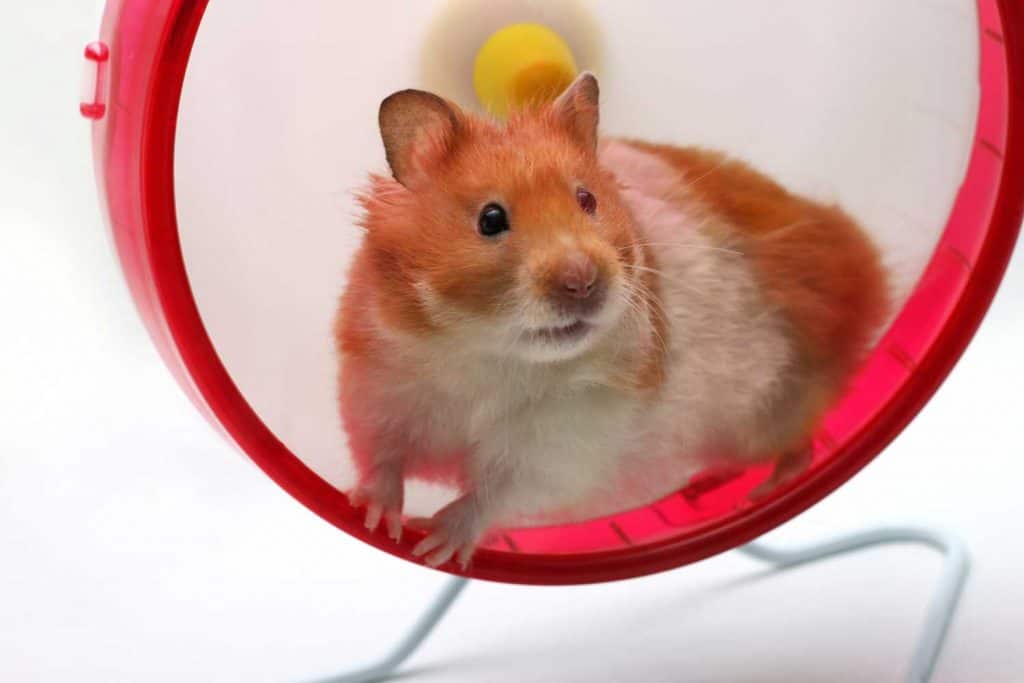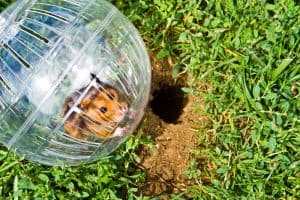You want to know how long Teddy Bear hamsters live. You may wonder what the difference is between teddy bear hamsters, Syrian hamsters, and dwarf hamsters. We will talk about the differences between these hamsters and their lifespans. We will also discuss more details about the teddy bear hamsters, including whether they like to live together or in solitary.
The average lifespan of the Syrian hamster is 2-3 years as pets. Others claim their Syrian hamster lived to be as much as 5 or 6 years old. The lifespan is shorter for wild hamsters.
Teddy bear hamsters can make excellent companions, and you want to know how much time you will have with your special little friend. You might also wonder what you can do to prolong your hamster's life. We will talk about whether teddy bear hamsters like to be held and whether male or female hamsters are better. We will answer all of your questions in this post, so keep reading to learn more.

How Long Do Teddy Bear Hamsters Live?
Teddy bear hamsters have an average lifespan of 2-3 years as a pet. Teddy bear hamsters are originally from Syria, and that is why they are called Syrian. In the wild, teddy bear hamsters will only live for 1-2 years on average. This does not mean that your pet hamster can't live longer because Syrian hamsters can live as long as 4 years and possibly more.
The other most common form of hamster is the dwarf hamster. Dwarf hamsters live for 3 years on average, so it has a longer expected lifespan than teddy bear hamsters. There are different kinds of dwarf hamsters, and the longest living is the Robovoski that has an expected lifespan of up to 4 years.
Several factors contribute to the hamster's lifespan. Some of these factors are genetic that can't be controlled or avoided. The caretaker can control other environmental factors.
What Can't Be Controlled?
Animals and humans pass on genetic traits to their babies. Genetic disorders and predispositions can be inherited in hamsters as they can in humans or dogs. The only difference is that we don't know much information about the predispositions that are passed on genetically for hamsters. Certain genetic lines might make their way to some pet stores and not to other stores. Unfortunately, this is not a factor that can be controlled.
Syrian hamsters are more likely to get wet tail than dwarf varieties, which is severe diarrhea with a low survival rate in all hamsters. Dwarf breeds are more likely to get diabetes. You cannot prevent getting a hamster with predispositions, but you can be more careful to prevent your pet from getting a life-threatening illness.
What Can Be Controlled?
The most important factor in health and longevity for a hamster is diet. Exercise, cage cleanliness, and the hamster's stress level are also factors for your pet's longevity. Fortunately, you do have a lot of control over these factors. There are steps you can take to promote health and vitality for your hamster.

Diet
The easiest way to meet your hamster's nutritional needs is to buy high-quality food that meets your breed of hamster requirements. When you use a well balanced store-bought food, that should make up 90 percent of your pet's diet. Treats are good for training and interacting with your hamster, but they should not be any more than 10 percent of the diet. For a comprehensive guide to balancing your hamster's diet, check out How To Feed Hamsters - A Guide For Beginners.
Oxbow Fortified Nutrition Hamster Food
Click here to buy Oxbow Fortified Hamster Food at Amazon.
Exercise

A hamster must have a running wheel for exercise. In the wild, hamsters would need to run to escape predators. It is an inherent instinct the hamster still has. In addition to a running wheel, you can get your hamster out of the cage during its active time of day. Make sure to section off an area, so there is no place for your little friend to escape. A running ball is another exercise option that is more intense and fun than the running wheel. There is some debate on the safety of a running ball. For more information about the use of running balls for your hamster, read How Long Can You Keep A Hamster In A Ball?
Niteangel Silent Hamster Exercise Wheel
Click here to buy the silent Niteangel exercise wheel at Amazon.
Cage Cleanliness
Cleanliness is important for a hamster's health, which primarily requires you to keep the bedding clean. The typical cleaning schedule for a hamster cage should involve spot cleaning every day. Look for any soiled bedding and remove it from the cage. Look for any old food and remove it from the cage. Clean the water dish and food bowl weekly. You don't ever want to replace all bedding because it will cause unnecessary stress on your hamster. Maintaining a clean cage is the most important thing to prevent potentially fatal diseases, like wet tail.
Fresh News Recycled Paper Bedding
Click here to buy Fresh New Recycled Paper Bedding at Amazon.
Stress
Know about your hamster and the primary causes of stress. Ensure your pet has a comfortable temperature, ideally between 68 and 72 degrees Fahrenheit. Slightly warmer or cooler than this range is also acceptable. Hamsters should have exercise and a clean cage. A teddy bear hamster should live without any hamster roommates, or they will be very stressed. Hamsters are crepuscular, which means they sleep during the day and are most active during dawn and dusk. Disturbing your hamster during daylight hours can cause extra stress.
Can Teddy Bear Hamsters Live Together?
Teddy bear hamsters should never live together. This might seem contrary to what you see in pet stores because they might have several Syrian hamsters together in one cage. Teddy bear hamsters are territorial and will fight with any cage-mates, sometimes to the death. The pet store's likely scenario is that an aggressive hamster is removed from the cage before customers witness anything. If you put two Syrian hamsters in a cage together, it is only a matter of time before they fight.
Do Teddy Bear Hamsters Like To Be Held?
You can train your teddy bear hamster to be held from a young age, and they do enjoy this kind of social interaction. Remember to do this during their active periods around dawn and dusk to not disturb their sleep. If you try to handle any hamster during daylight hours, it will be more likely to bite you out of stress. Your hamster can get accustomed to your scent and feel comfortable around you. You can also use treats to allow your hamster to gain trust.
Are Male Or Female Teddy Bear Hamsters Better?
Hamster personalities can be different regardless of sex. There are some notable differences between males and females. Female teddy bear hamsters go into heat every four days, and there is a bad smell that comes with the heat cycle. Female hamsters are thought to be more territorial, but male teddy bear hamsters are also very territorial. If the smell is a concern for you, then the male teddy bear hamster is a better choice.
What Do Teddy Bear Hamsters Like To Play With?
Teddy bear hamsters like wooden and cardboard chew toys. Cardboard tubes from toilet paper and paper towels can be reused as hamster toys. They can crawl inside of them and chew on them. Exercise is vital for the teddy bear hamster's health, and an exercise wheel is a favorite toy of all hamster breeds. Hamsters also enjoy different kinds of climbing toys or strings that hang from the top of the cage. For a more detailed look at hamster toys, check out 11 Inexpensive Hamster Toys That Your Hammy Will Love.

In Closing
Syrian hamsters are expected to live 2-3 years on average while in captivity. This is notably more than they can survive in the wild, which is about 1-2 years on average. You can do several things to make sure your hamster is comfortable and healthy, which will provide the best conditions for long life. Make sure your hamster gets proper nutrition, and they are not fed too many unbalanced snacks. Hamsters will not overeat in quantity, so you can spoil their dinners by giving too many treats.
Cleaning the cage will prevent stress for your hamster while also protecting against diseases like wet tail. Syrian hamsters are genetically more likely to get wet tail disease, which has a low survival rate. There are other genetic predispositions that you will not know when you buy your hamster. As much as you try to control for genes, there is not enough info available to make a controlled choice.
Avoid interacting with your hamster during sleep hours because this causes stress and disrupts its sleep. Do not put more than one teddy bear hamster in a cage. If you want to have more than one hamster, you should consider getting dwarf breed hamsters. They need to live with other hamsters to be healthy, whereas Syrian hamsters need to live alone to be healthy. Keep your hamster cage clean, encourage exercise, and provide a well-balanced diet to promote your pet's longevity.





![A cute little hamster lying inside his pink cage, Can You Take A Hamster On A Plane? [And How To]](https://hamsters101.com/wp-content/uploads/2021/08/A-cute-little-hamster-lying-inside-his-pink-cage-300x200.jpg)
